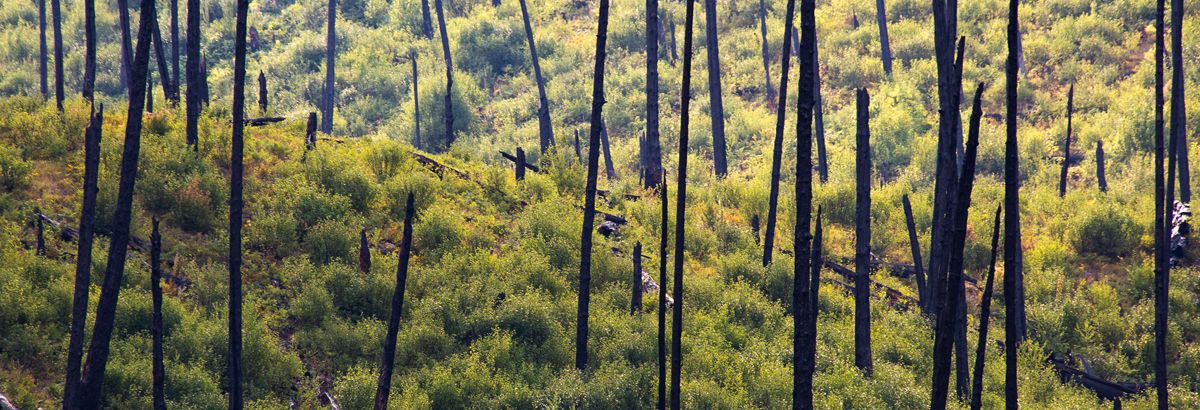UM IoE Graduate Student Fellowship Awards

2024 UM IoE Graduate Student Fellowship
September 3, 2024
UM IoE Director, Dr. Frank Rosenzweig requests proposals for the Fall 2024 UM IoE Dissertation Improvement Grants. The fellowship awards are open to UM PhD candidates whose research aligns with themes relevant to the UM Institute on Ecosystems.
Amount: $2,500
Source: 猎奇重口 Institute on Ecosystems
Awards: Up to three fellowships for Fall 2024
Eligibility: PhD candidates whose research aligns with themes relevant to the UM Institute on Ecosystems, such as (i) ecosystem studies; (ii) population, community, and landscape ecology; (iii) ecological and evolutionary genetics
Deadline: October 29, 2024 at 5:00 PM MDT
Doctoral students who meet the eligibility criteria can apply for a fellowship to support fall research and travel expenses that facilitate the completion of their Ph.D., increase their competitiveness for post-doctoral applications and federal grants, and contribute to peer-reviewed publications. Applications will be evaluated based on scientific merit, academic record, and likelihood of the candidate achieving their project goals.
To apply, students must submit a proposal that meets the requirements below. Applications will be reviewed by the IoE Fellowship Committee chaired by Director Frank Rosenzweig. All application materials should be sent directly to Jamie Lockman (jamie.lockman@umontana.edu) no later than October 29, 2024, at 5:00 PM MDT.
Application Requirements:
A two-page, single-spaced (800-word limit) proposal that outlines (i) the current status of the student applicant’s dissertation, (ii) overarching research goals, and (iii) the role that this award would play in advancing the completion/dissemination of that research. Please include a title and abstract not exceeding 100 words. The proposal should include a timeline for completing all portions of the proposed research. Anticipated conference presentations and/or publications should be included separately as an Appendix. The abstract and appendix do not count toward the 800-word limit.
A Curriculum Vitae (CV) that summarizes the student applicant’s educational background and academic achievements, including undergraduate and graduate GPAs, advanced coursework and/or workshops, presentations, published abstracts, and peer-reviewed publications, plus any other information that contributes to the applicant’s merit.
A letter of support from the dissertation advisor attesting to the quality, significance, and probable impact on the field of the candidate’s work, as well as to the student applicant’s capacity to complete their Ph.D. The letter should indicate the student’s career stage (e.g., 2nd-year student, Ph.D. candidate) and their anticipated defense date by semester/year.
Fellowship Awardees Must:
Register for a dissertation boot camp with the UM Writing and Public Speaking Center or an equivalent professional development opportunity dedicated to excellence in science communication.
Offer a public seminar during the 2024-25 academic year to the 猎奇重口 graduate community through existing venues such as departmental or graduate group seminars. Candidates must explicitly highlight progress facilitated by the IoE award.
Acknowledge IoE support appropriately in oral and poster presentations and in peer-reviewed research publications.
Evaluation Criteria:
1) Quality and impact of research project.
2) Potential impact of funding on dissertation completion.
3) Quality, clarity, and detail of the proposal, including execution details (timeline, specificity of remaining work, etc.)
4) Quality and impact of prior research activities.
Contact: Jamie Lockman, (406) 243-5515 or jamie.lockman@umontana.edu
2024 UM IoE Graduate Student Fellowship Awards

Leah Rensel
"Using Sin Nombre Virus in Deer Mice to Understand Disease Transmission"
Abstract: Transmission of wildlife diseases is challenging to study due to the difficulty of tracking infected individuals. Sin Nombre Virus (SNV), a hantavirus endemic to deer mice, offers an ideal opportunity to both quantify and manipulate the rates of contact between individual animals to understand SNV transmission. I propose to use proximity loggers to track deer mice in semi-natural enclosures to quantify contact rates; I will also manipulate the enclosures’ density and species diversity to see how competition might influence contact rates. As rodents are common pathogen reservoirs, my research will be applicable to managing both SNV and other host-pathogen systems.
Program of Study: Wildlife Biology; Advisor: Dr. Angie Luis; Thesis Topic: Investigation of Contact Rates in Deer Mice to Understand Sin Nombre Virus Transmission; Expected Graduation, Spring 2027.

John Statz
Causes, consequences, and regulation of Wolbachia tissue tropism across diverse Drosophila hosts
Abstract: Microbial endosymbiosis is widespread, profoundly impacting host and microbial biology at ecological and evolutionary time scales1-5. Vertically transmitted Wolbachia bacteria, prevalent in half of all insect species, exhibit diverse tissue distribution and abundance6-8. Little is known about the regulation of Wolbachia tissue tropism, its function, and its evolution. Using diverse Drosophila-Wolbachia systems, this study aims to explore Wolbachia tissue tropism, hypothesizing its adaptive nature and differential regulation across reproductive and somatic tissues.
Program of Study: Cellular, Molecular, and Microbial Biology Program; Advisor: Dr. Brandon Cooper; Thesis Topic: Causes and consequences of Wolbachia tissue tropism across diverse Drosophila hosts; Expected Graduation Spring 2025. Born and raised in Minnesota, Statz grew up in a bustling household with four siblings, where playing sports was a constant pastime. While he had an appreciation nature throughout his life, it wasn't until late in his undergraduate career that he fell in love with genetics, igniting a passion that has guided him ever since. Alongside his academic pursuits, he's been happily married for nearly three years and recently welcomed his first daughter, Eleanor, in April 2023. Outside of work and family life, he enjoys cooking, gardening, hiking, biking, and fishing.

"Rangeland soil seed bank dynamics: Understanding how soil properties and land management strategies influence seed bank suitability and pathways for ecosystem restoration"
Abstract: Soil seedbanks – the living seeds in the soil profile and on the soil surface – are important components of rangeland community ecology and assembly. Understanding seed-soil-plant relationships and interactions with ecological restoration treatments can help predict ecosystem vegetation trajectories to help invest resources strategically into rangelands for their restoration and conservation.
